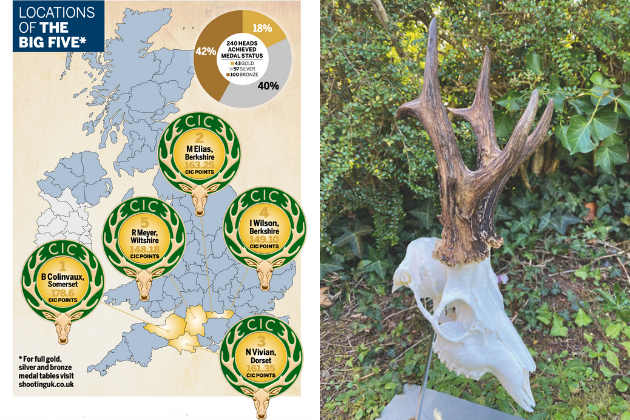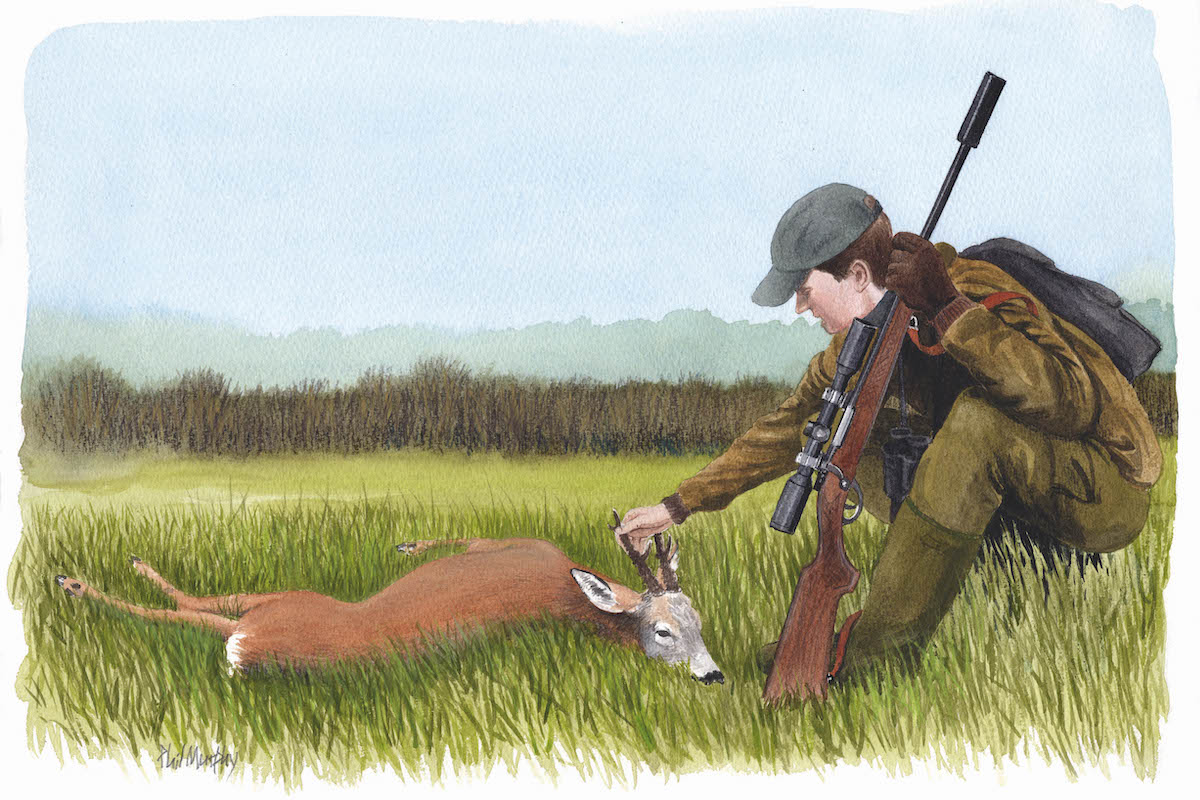English roe review 2020
Wise management of ideal roe country produces 2020’s top trophy, reveals Tony Dalby-Welsh

The impact of COVID-19 on both professional and amateur hunters alike has been extraordinary. It is interesting that, despite the pandemic, we still evaluated 1,014 heads of all species last year compared with the 1,200 that we looked at in 2019. The courier business became an enabler for both hunters and assessors, many of the smaller species arriving in packages enclosed in bubble wrap, including a muntjac from Arizona that had been shot in Oxfordshire.
English roe review 2020
While we provide a detailed report on roe deer for both England and Scotland in Shooting Times, we also provide tables of other species that we have evaluated during the last calendar year. These tables reflect not only the breadth of species hunted at home and abroad, but also statistics concerning all the UK species. Of particular note is the maintenance of interest in both muntjac and Chinese water deer, whose numbers this year reflect the increase reported in 2019.
 Dusty cupboards
Dusty cupboards
I initially suspected that a number of hunters had taken time during the first lockdown to dig around in sheds, barns and dusty cupboards to look out antlers they had not previously considered worth measuring. But as the summer progressed, so the dates of the hunts fell increasingly within 2020. So it would be fair to say that this year was not only that of the pandemic, but also of relatively mediocre quality for roe, either through lack of opportunity or due to the absence of visiting stalkers.
Perhaps the Chancellor of the Exchequer’s forecast ‘coiled spring’ of household expenditure will apply equally to the quality of roebucks that appear in 2021. That said, just under 300 English roe were presented for evaluation of which 240 were awarded medals; 43 gold, 97 silver and 100 bronze.
This year the highest score recorded came from Somerset, as did the largest number of heads for assessment. Bernard Colinvaux, from Belgium, has featured in these reports before. His stewardship of ideal roe country in the south-west of England and the careful and wise management of the estate has produced a range of quality heads. This year’s was an excellent six-pointer weighing 688g and scoring 178.6 CIC points, topping the English list.
Though this relatively old animal was starting to go back, it was good to see that only a couple of extra tines were apparent, the traditional six-point head prevailing. This was a prime example of an animal culled after it had shown its best.
The next two heads were smaller by 10 CIC points, the only ones to top 150 points and spread between two counties, Berkshire and Dorset. Michael Elias’s 163.25-point buck from Berkshire was closely followed by Nigel Vivian’s Dorset buck at 161.35. Following them were the only other heads to score 140 CIC points, with nine of them originating in counties as far apart as Northumberland and Wiltshire, West Sussex and Yorkshire.

This head, sent in anonymously from Northamptonshire, scored 140.9 points
Golden counties
Over the years we have recorded which counties have produced the greatest number of heads put forward for assessment. This year — by some considerable margin — Somerset leads the way with 39 medal heads of which eight were gold. Sussex followed with 32 heads, but the quality was this year sadly lacking with only three gold medals assessed. Wiltshire, in its usual way, produced a good crop, 29 medal heads, of which seven were gold, followed by Hampshire and Surrey with 24 and 18 respectively, each producing four gold medals.
Other counties sustaining numbers were Dorset and Berkshire with 12 each, Oxfordshire with 11 and, continuing the trend that we identified some five or six years ago, Northumberland with nine heads, three of which were gold. Other contributors were Gloucestershire, Devon, Northamptonshire, Lincolnshire, Cambridgeshire, Suffolk, Kent, Cumbria, Buckinghamshire, Worcestershire and Herefordshire.
We’ve often drawn attention to the fact that some of the biggest heads we evaluate are often not the most attractive. Old age in roe is often accompanied by additional points or beams becoming thickened and the whole form of the head moving away from the traditional six points. While perhaps less attractive to the purist, they do produce some very strange forms and a subsequent test for the CIC’s assessors.
There is, however, a majority that do conform to the norm and those submitted by Henry Young (131.48 points), Michael Newton’s showing typical Sussex pearling (120.25) and Phil Easeman’s (129.05) are all good examples. Average net weights for roe in 2020 were 500g for gold medals, 432g for silver and 386g for bronze, figures that support our general rule of thumb that allows hunters to carry out a preliminary assessment of their heads before submitting for evaluation.
It is clear that 2021 will present similar problems to those experienced in 2020 with curtailed opportunities to manage deer and to hunt. That said, there is a glimmer of hope on the horizon of this summer at least returning to some form of normality. I doubt that many, if any, of the shows we have attended in the past will be going ahead. The CIC evaluation board, however, remains very much open and available to hunters to assess their heads.

This first gold medal buck is from C Palmer, Somerset, 138.40.
The various courier companies, and in particular Royal Mail, have shown themselves capable of looking after trophies in transit — providing they are well packed — and delivering them to us for assessment. Personal delivery is also an option.
I would therefore encourage hunters across the country to use the UKTEB website to establish contact and to continue sending their trophy heads in for evaluation.









